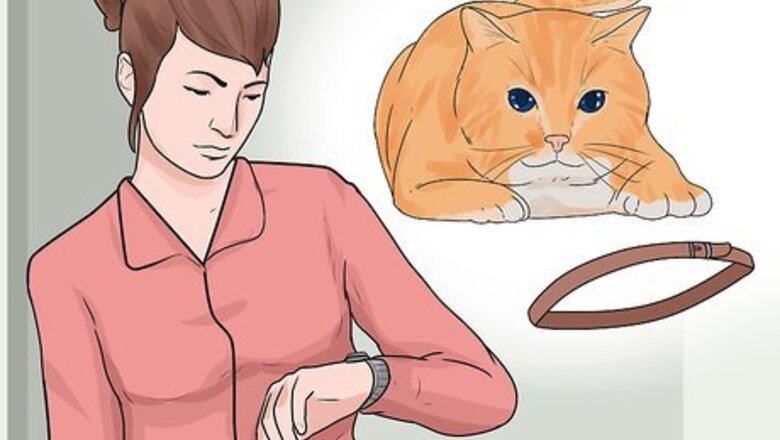
views
X
Research source
Putting a collar on your cat may prove to be difficult at first, especially if this is the first time that she is wearing one.[2]
X
Research source
Have patience, though—she will eventually get used to it and probably even forget that she has it on.
Putting the Collar on Your Cat
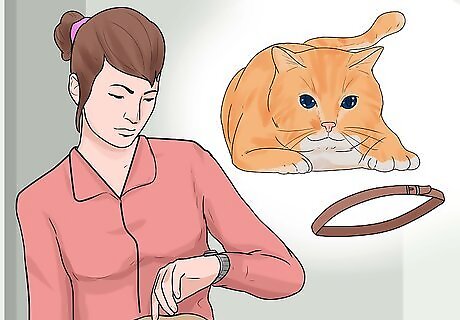
Select a time to put the collar on. The collar will be a new experience and sensation for your cat, so it will be important to choose a time of day when she will be a little less resistant to having the collar put on. You could try putting it on during her meal time or play time, when she will be distracted with another activity. You could also choose a time when she is calm, such as when you are spending quiet time with her.
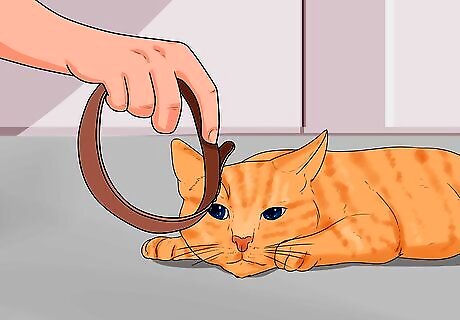
Let your cat investigate the collar. Place the collar on the ground near your cat so that she can get used to it before you put it around her neck. To help her get more comfortable with the collar, you can put her own scent on it. To do this, you can rub the collar on your cat's bedding. You can also rub a soft cloth around your cat's mouth (if she will let you) and then rub this cloth on the collar. The collar may not seem so foreign and strange to her if she recognizes her own scent on it. You could also purchase a synthetic pheromone spray at your local pet store and spray this on your cat's collar. Do not rush your cat's investigation of the collar.
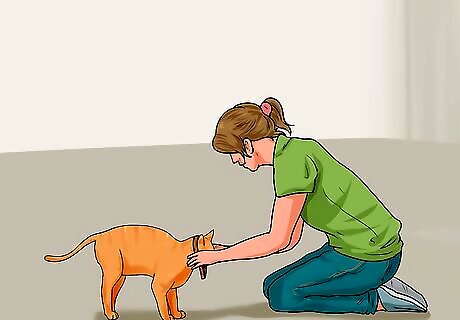
Put the collar on your cat. When your cat is calm and content, slowly and gently place the collar around her neck. Talk to her in a soothing and reassuring voice while you are putting the collar on to make the experience as comfortable as possible for her. Give her a treat when you have the collar on so that she can begin to make a positive association with wearing it. Your cat will probably fidget with, or scratch at, the collar and try to get it off the first time that you put it on. The first time that you put the collar on, leave it on for a few minutes then take it off. Put the collar on your cat each day, leaving it on for longer and longer each time. Your cat may need some time before she's more comfortable with wearing the collar all day. Consider giving her a treat each time that she has the collar on and doesn't try to get it off. Eventually, she will get used to the collar being on without needing a reward. If she manages to get the collar off on her own, put it back on but do not give her a treat—she may think that she is being rewarded for getting the collar off.

Check the fit of the collar. It is very important to make sure that your cat's collar does not fit too tightly or loosely around her neck. You will know that the collar fits correctly if you can snugly yet comfortably slide two to three fingers between the collar and your cat's neck. Your cat may tense her neck when she has the collar on for the first time, so you may need to wait a few minutes until she relaxes her neck muscles before testing the fit. Do not put pull or tug on the collar when you are sliding fingers under it. If the collar does not fit correctly the first time, remove it from your cat and adjust it accordingly.
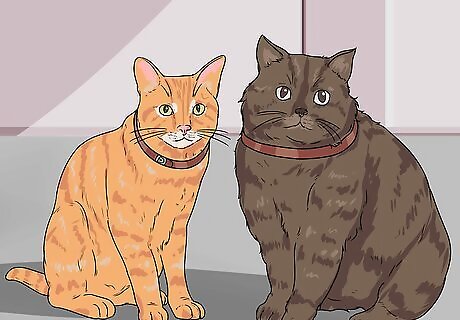
Check your cat's collar on a regular basis. Your cat may lose or gain weight as she gets older. If significant enough, her weight changes could cause her collar to become too loose or too tight. If you notice that her collar is hanging loosely around her neck or seems to be squeezing her neck, take it off and make the necessary readjustment.
Selecting the Right Collar
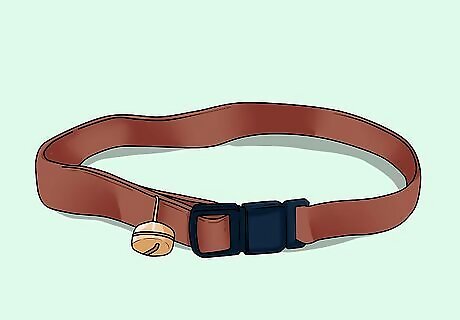
Choose a safe collar. When you walk into your local pet store, you will notice that there are many types of cat collars from which you can choose. Despite the many choices, keep in mind that safety is the most important feature of any cat collar. Breakaway collars are considered to be the safest type of collar for cats, since they will automatically open up if your cat accidentally gets her collar stuck on something (e.g., window blinds, furniture). Breakaway collars will typically have a fastener that will automatically unclasp with enough pressure. Some collars come with attachments, such as bells. Although these attachments can be useful for an outdoor cat (e.g., alerting potential prey to the cat's presence), they can also get caught or stuck on things, which could be dangerous for your cat.

Examine the collar. Before you purchase the collar, run your fingers along the entirety of the collar. It should not have any rough or sharp edges that could irritate your cat's skin. You should also check to see if the stitching has started to unravel. If the collar has a fastener, make sure that the fastener does not have any sharp edges when fastened. Consider testing the strength of the fastener before leaving the store. Pull on the collar with varying amounts of pressure. The fastener should release with a moderate amount of pressure. If it releases with barely any pressure at all, then your cat could slip out of the collar too easily. The amount of pressure needed to release the fastener will depend on your cat's weight and size. For example, a heavy cat would probably need a fastener that releases with more pressure than would be necessary for a light cat.
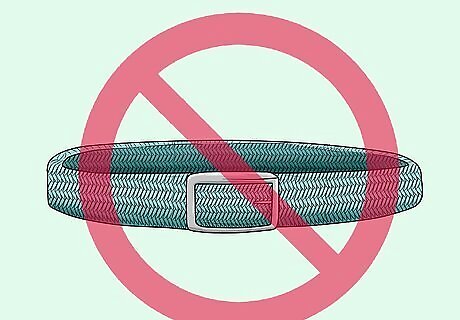
Avoid elastic collars. Some cat collars will have a section of elastic fabric woven into them, which would stretch to the point where your cat could get out of the collar if it gets stuck on something. However, elastic collars can serious injury to your cat if she happens to get her leg stuck through it. Elastic collars also have the potential to get stuck over your cat's jaw, which can cause serious injury. If you choose an elastic collar and it gets stuck on your cat in a way that causes injury, take your cat to your veterinarian immediately for treatment.
















Comments
0 comment